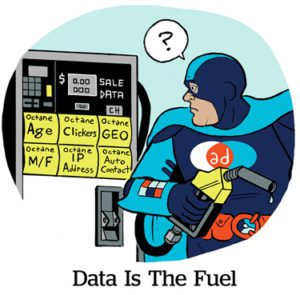Most people have already heard of Pizza Hut. But high awareness isn’t enough to generate new and consistent sales.
Which is why well-known brands like Pizza Hut are looking to new channels, including CTV, to drive incremental reach and sales.
Pizza Hut spends most of its ad dollars on digital media these days, CMO Lindsay Morgan told AdExchanger. “And what we’re really buying on digital media is incrementality.”
For example, Pizza Hut spent 40% more than it would on a typical media campaign to promote its new handheld product line, called Pizza Hut Melts, across streaming channels.
The Melts campaign kicked off in October on CTV and digital channels, including YouTube, TikTok and Twitch, with some linear tossed in. Pizza Hut is also sponsoring a college basketball stream on Barstool.tv, which includes custom logo integrations and product placements.
Data delivers
Although the Melts commercials are designed to drive awareness for a new product, the main objective of the campaign is to drive incremental sales from digital and streaming ad exposures, Morgan said.
Digital is an opportunity for a brand that’s already saturated other airwaves to reach younger and, hopefully, incremental audiences who could eventually turn into repeat customers.
But brands need reliable access to first-party data to determine whether a sale is incremental or not, Morgan said.
Look-alike modeling is becoming more challenging for advertisers as a result of privacy laws, she said, and so Pizza Hut has been leaning into a first-party data strategy to target and measure its own audience, including encouraging customers to make online orders.
Pizza Hut is also spending more to promote its loyalty program, Morgan said, which first launched in 2017 and now features deals and discounts, including for Melts, to incentivize customers to create accounts and go the ecommerce route.
Today, most of Pizza Hut’s sales come directly from its app or website, both of which generate a ton of first-party data the company uses for campaign planning and attribution, Morgan said.
For example, Pizza Hut can detect whether a particular customer has placed an order in the last 30 days, then market to that person accordingly. Pizza Hut typically sticks to its own web or app to reengage recent customers and relies on TV or open web display to stay top-of-mind with less frequent customers.
Although Pizza Hut’s messaging is mostly consistent across channels, its approach to measurement and attribution varies depending on the channel.
It measures social and online ads based on engagement metrics, including clicks, video completion rate and site visits, whereas streaming and linear TV ads are measured primarily by reach and frequency counts.
But attribution is also much trickier when ads run on a TV screen.
Pizza Hut uses marketing mix modeling and works with iSpot.tv to measure attribution by channel breakout, including determining whether a conversion is linked to a CTV ad exposure.
As a result of Pizza Hut’s newly diversified channel strategy, the brand has already seen an uptick in repeat customers since the launch of its Melts campaign two months ago, Morgan said.
CTV versus linear
Although Pizza Hut is going big on CTV, it’s not dumping linear TV, which is still valuable for reach.
Rather than taking budget away from linear, Pizza Hut is maintaining its linear TV ad spend and simply spending more on streaming.
“I don’t see us walking away from linear TV,” Morgan said, “because linear is still driving a tonnage of transactions for us.”
Morgan said she isn’t worried that spending more on streaming will cannibalize the effects of its linear spending. Pizza Hut expects that its linear and CTV investments will work together to drive incremental sales.
Still, linear TV certainly has its challenges. Linear CPMs are generally more expensive than streaming, and the channel also doesn’t offer as granular a level of audience targeting, so Pizza Hut has to spend judiciously on linear, Morgan said.
But premium dayparts on linear TV, particularly live sports, still do the trick, and Pizza Hut intends to keep on buying against them.
Pizza Hut’s plan, Morgan said, is to continue investing in all video channels to build a diversified audience base with purchase intent.
















